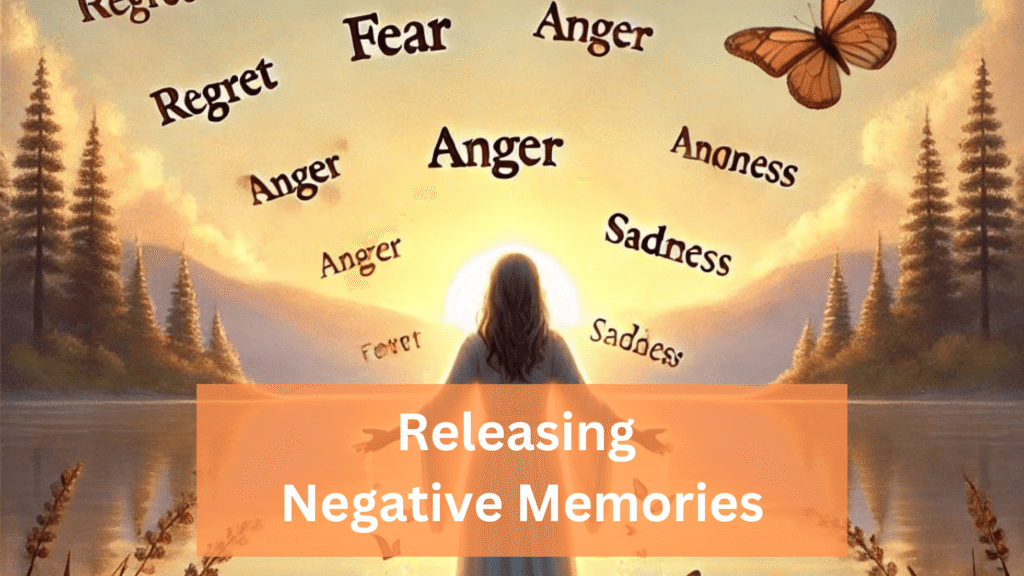
As a holistic therapist, I believe that the mind, body, and spirit are deeply interconnected, and that unresolved emotional memories can become imprinted not only in the subconscious mind but also within the physical body and energetic field. Negative memories—particularly those tied to trauma, guilt, shame, or fear—can weigh us down, shaping our beliefs, behavior patterns, and emotional responses long after the original event has passed.
But here’s the empowering truth: you are not your memories. They are experiences, not identities. Through intention, presence, and inner work, we can release what no longer serves us and create space for healing, wholeness, and growth.
Below are holistic, mind-based techniques to gently release negative memories:
1. Mindful Acknowledgment

The first step in releasing is recognition. Many people suppress painful memories, but what we resist often persists.
Practice:
- Find a quiet space, sit in stillness, and gently bring the memory to mind without judgment.
- Breathe deeply and observe your body’s response.
- Say to yourself: “I see you. I honor you. I release you.”
This mindful witnessing begins to dissolve the energetic charge of the memory.
2. Guided Visualization
The subconscious mind responds powerfully to imagery. Visualization allows us to “rewrite” the emotional imprint of a memory.
Practice:
- Visualize the memory as a scene on a screen.
- See yourself as your current, wiser self entering the memory.
- Offer compassion to your past self. Surround them in light. Let them speak, cry, or release.
- Then visualize the scene transforming—imagine the light dissolving the negative emotions.
This communicates to your subconscious that the experience has been processed and no longer needs to be held.
3. Inner Child Healing
Many deep-rooted memories stem from childhood, when we lacked the tools to cope. Inner child work allows us to re-parent and bring healing to that younger self.
Practice:
- Connect with your inner child through journaling or meditation.
- Ask: “What did you need in that moment that you didn’t receive?”
- Offer it now: love, safety, validation.
- Affirm: “You are safe now. I am here for you.”
This process often brings profound emotional relief and integration.
4. Affirmations and Mental Reframing
Words are powerful. Repeating positive affirmations can shift neural pathways and reprogram how your mind stores and relates to past events.
Practice:
- Identify the limiting belief tied to the memory (e.g., “I’m not enough”).
- Reframe it with a healing affirmation: “I am worthy. I choose peace. I am free from the past.”
- Speak or write this daily. Let your subconscious absorb it.
5. Energetic Release through Breathwork
Breath is the bridge between body and mind. Conscious breathing can release stored emotions tied to painful memories.
Practice:
- Practice deep, rhythmic breathing (e.g., 4 counts in, 4 hold, 4 out).
- As you exhale, imagine releasing emotional residue with your breath.
- You may pair it with visualization: breathing light into your body, exhaling darkness.
Over time, the breath can help clear the emotional debris that memories leave behind.
6. Gratitude and Closure
Instead of rejecting the memory, offer it gratitude—for the growth, the resilience, and the lessons.
Practice:
- Write a letter to the memory, expressing thanks for what it taught you.
- Conclude with: “I now let you go with love. I am free.”
- Burn the letter (safely) or release it into nature as a symbolic act.
This creates energetic closure and signals completion.
Final Thoughts
Releasing negative memories isn’t about forgetting. It’s about no longer allowing them to define you. As a holistic therapist, I’ve witnessed countless people regain peace, confidence, and clarity by engaging the power of the mind with compassion, consistency, and conscious intention.
Remember: Healing is not linear. Be gentle with yourself. And know this—every step you take toward releasing the past is a step toward reclaiming your wholeness.






